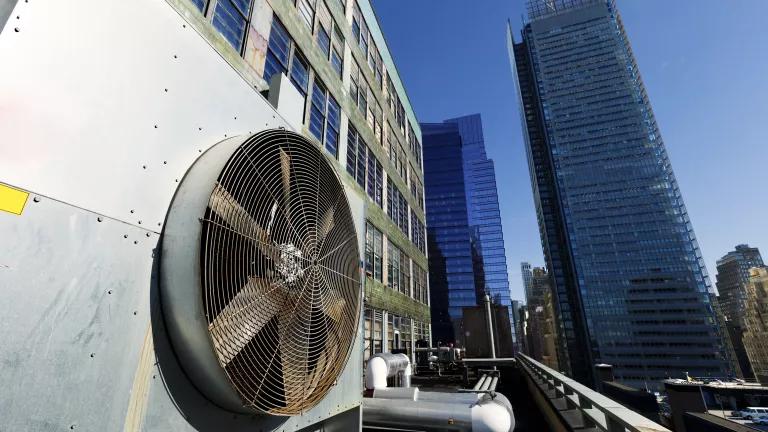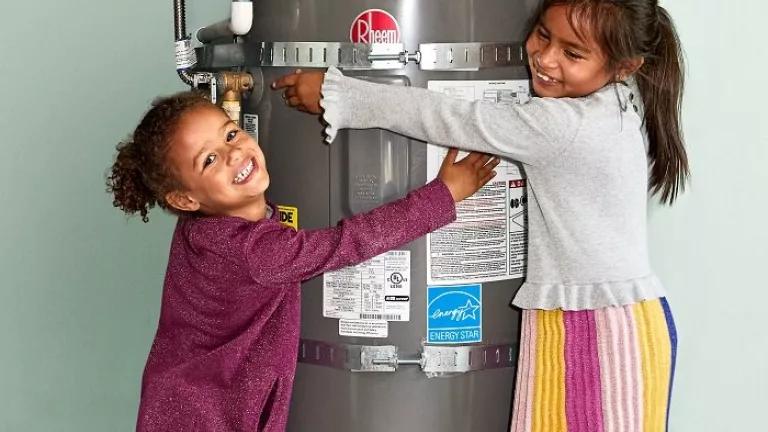Energy Efficiency Matters Now More Than Ever
Achieving a low-carbon future is in reach–but only if policy-makers take swift and decisive actions to prioritize energy efficiency.

Improving the energy efficiency of our homes and commercial buildings is critically important to achieving our nation’s climate goals – and investing in efficiency reduces the cost to decarbonize by more than $100 billion. That’s among the findings of a recent report from Berkeley Lab and The Brattle Group, which underscores the continued importance of policies and programs to reduce the energy use of our buildings and the equipment within them.
When we talk about the emissions related to our nation’s buildings, there are two components: emissions from the demand-side (often referred to as “behind the meter,” created by the end uses of appliances and equipment in our homes and buildings) and emissions from the supply-side (created by the power sources that fuel the electricity grid, including natural gas and coal). In theory, we could make progress toward our buildings-related climate goals by powering the electricity grid with carbon-free renewable energy and ignoring the demand that comes from our buildings—but that result would achieve fewer savings and come at a significantly higher cost, without nearly as many benefits to homeowners and businesses. Buildings account for nearly 40 percent of the nation’s carbon emissions, and achieving our climate goals goes hand in hand with addressing the efficiency and emissions of our buildings. We know how to do this. Consistent with NRDC’s own analysis published earlier this year, the Berkeley/Brattle report found that buildings-sector emissions can be reduced by more than 90 percent by 2050 through the combination of demand-side reductions through efficiency upgrades, electrification of end uses like space heating and water heating, and supply-side decarbonization of the power sector. What’s more, building efficiency and electrification deliver fully half of these reductions, while also lowering utility bills, making homes and buildings healthier and more comfortable, and reducing overall demand on the electricity grid.
Decarbonizing the electricity grid will require billions of dollars of investments—but simultaneously investing in building efficiency and electrification makes it cheaper to do so. Demand-side solutions in buildings could avoid upwards of $100 billion per year in power system costs by 2050, while also generating substantial benefits for consumers. An efficient, electrified home can result in lower overall energy use and lower utility bills. In many cases, swapping out fossil fuel powered appliances like gas stoves and furnaces will improve both indoor and outdoor air quality. Heat pumps provide both heating and cooling, providing access to cooling in areas that may be suffering from warmer temperatures due to climate change. And well-insulated homes are more comfortable—and retain that comfort for longer during power outages or other extreme weather events.
The Berkeley/Brattle report found that not only is investing in efficiency important, it’s also important to make those investments sooner than later. Prioritizing efficiency in the near term can deliver significant carbon pollution reductions by 2030, while also setting the stage for electrification of end uses and decarbonization of the electricity grid by 2050. The sooner buildings can be made efficient—including through “early retrofits” that replace equipment before the end of its useful life—the less costly it will be to decarbonize the electricity grid.
The good news is, we have the tools to make this a reality—though there is still work to be done. The key demand-side policies cited by the report include aggressive building codes for new construction, rapidly-improving efficiency standards for appliances and equipment, utility rate designs that promote electrification, and comprehensive building retrofits—all of which are policies where NRDC has deep advocacy expertise. The Inflation Reduction Act and the Bipartisan Infrastructure Law invest more than $50 billion into technologies to improve our buildings. DOE projects that these investments, when coupled with other enacted policies, will put us on a path to reach a 40 percent emissions reduction by 2030, as compared to 2005 levels. While substantial, that is still below the goal of 50-52 percent reductions by 2030, setting up for net zero emissions economy-wide by mid-century. And that’s where the bread-and-butter efficiency policies can help pick up the slack: in addition to incentives to transform markets and consumer behavior, we must continue to promote rapid advancements in mandatory efficiency standards for equipment and building construction, as well as state and local policies that advance efficiency. It’s equally important to ensure that efficiency programs and policies are equitable, so that the benefits accrue to communities who have the highest energy and pollution burdens. Achieving a low-carbon future is in reach, as demonstrated by this study—but only if policy-makers take swift and decisive actions to prioritize energy efficiency.



